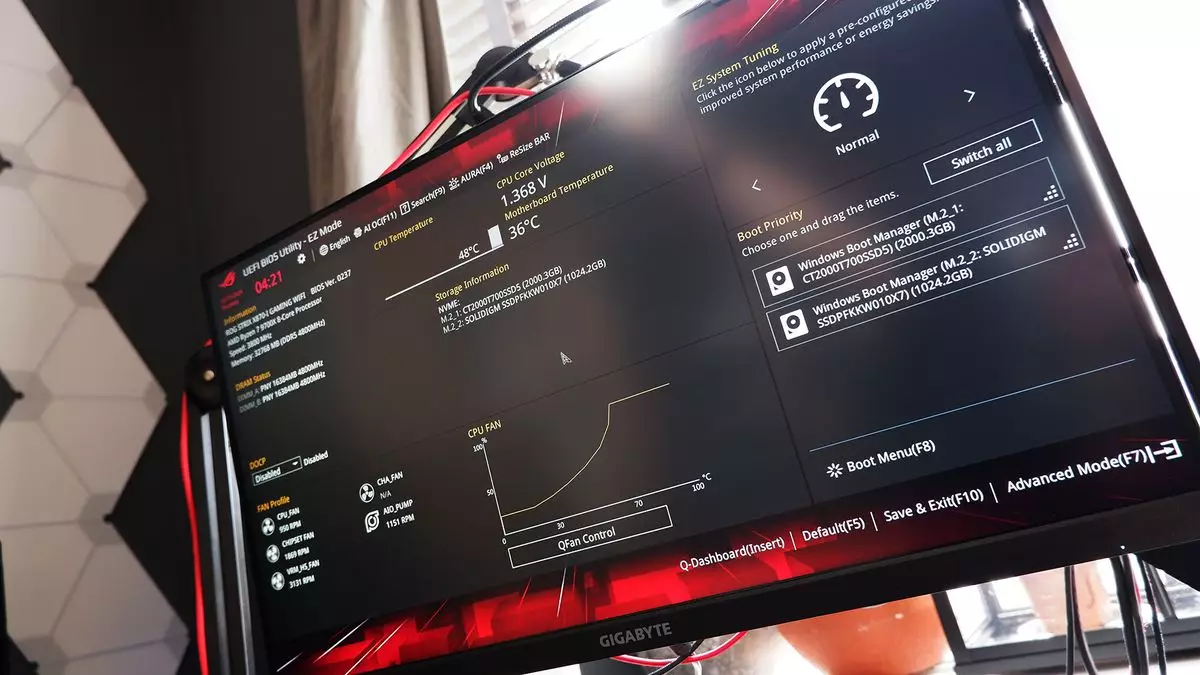The evolution of computing technology is characterized by constant upgrades and innovations. One area that often goes unnoticed, yet plays a critical role in user experience, is the BIOS interface. Just recently, I had the chance to build a gaming PC using the Asus ROG Strix X870-I Gaming WiFi motherboard, and my experience illuminated just how far we’ve come from the clunky, low-resolution interfaces of yesteryear. Booting up the system was a breeze, and the BIOS appeared on my screen with an astonishingly crisp display, something I had not expected. The transformation from fuzzy 768p visuals to a dazzling 1920×1080 resolution felt like a step into the future.
Just when I was filled with excitement about this cutting-edge change, I found myself questioning how long it had taken the industry to reach this point. Upon further investigation, it was revealed that Asus had made this announcement back in August, coinciding with the release of their X870 and X870E chipset motherboards for AMD’s Ryzen 9000-series processors. The company’s aim was clear: enhance both the aesthetics and functionality of their BIOS interface.
One of the most tangible benefits of upgrading to a high-resolution BIOS is the ability to view a greater array of settings simultaneously. No longer is the user relegated to endless scrolling through cumbersome menus in search of critical configurations. This improvement allows for an expedited approach to system customization, a feature that gamers and power users alike can appreciate. The thrill of programming my settings without the hiccups caused by low DPI environments felt refreshing. It seemed like a small change, yet it profoundly influenced not only usability but also my overall building experience.
Interestingly, this advancement was not an isolated occurrence. ASRock motherboards have apparently been offering higher resolution BIOS interfaces for some time, leaving many users to wonder why they have been ignored in broader discussions about motherboard innovations. ASRock’s foresight in this aspect highlights a critical fact: while the industry continues to laude new technologies or gaming-related features, fundamental renovations like these are equally deserving of recognition.
The question that arises is whether ASUS’s initial leap will motivate other manufacturers to step up their game. For instance, MSI’s recent offerings in their Z890 line still lack a similar upgrade, rendering their BIOS interfaces somewhat outdated compared to their competitors. This inconsistency exposes a gap in the market, allowing ASUS and ASRock to forge ahead and establish superior user experiences, while other companies must catch up. Given the competitive nature of the gaming motherboard market, it is both surprising and worrisome that MSI, a brand known for pushing boundaries, has so far missed this crucial update.
While Asus has embraced this high-resolution BIOS upgrade, it appears that other companies have not shown any inclination to retroactively update their older motherboards. I attempted to update a few older Asus motherboards, only to be met with disappointing results. This insight reveals that the path of innovation does not always guarantee assistance for existing users, forcing them to adapt to new developments through purchasing entirely new hardware. Thus, as we look toward a future where BIOS interfaces are set to become more user-friendly and rich in detail, it’s crucial for manufacturers to consider how improvements affect not just new buyers, but loyal customers holding onto previous models.
As we progress through 2024, it is apparent that the BIOS interface is receiving the attention it so critically deserves. With Asus leading the charge and ASRock providing valuable competition, users are on the cusp of experiencing an era defined by clearer visuals and improved navigation. Such advancements will bring substantial benefits to the enthusiast community and casual users alike. If this pattern continues, the future holds promising developments—not only for BIOS interfaces but also for overall user interaction with technology. The experience of building a system should be as enjoyable as the performance in the games that follow, and with these changes, we are definitely heading in the right direction.

